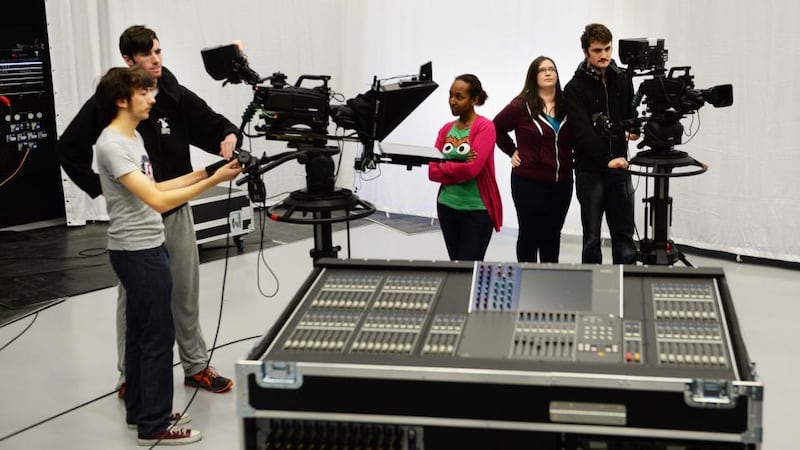It’s a blank canvas, space-age style. The walls of the new green-screen room at Dún Laoghaire’s Institute of Art, Design and Technology (IADT) literally glow with potential. Step inside and your brain inevitably starts to fill them with cartoon cheetahs, exploding cars – even entire cityscapes. Next door, the latest models of high-definition camera scoot silently around a vast, pristine, purpose-built television studio.
It may look like the future of film and television, but as far as the president of IADT, Annie Doona, is concerned, that future has already arrived. It didn't come cheap. The total cost of refurbishing an existing building on campus, plus all that kit, has been more than €7 million; some raised by the college, some from industry sponsorship and a large slice from the Department of Education.
Madness or bravery?
At a time when many educational institutions are feeling the pinch of austerity, does this spectacular upgrade count as madness or bravery? "It was something we had to do – something the State needs, and the education sector really needs," Doona says. "We've always had very good film and radio facilities – what we've lacked was the facility to make high-quality TV programmes. That's where the jobs are, and that's where the industry is heading."

For a technically-inclined life form the specifications on the new equipment are mouthwatering. Five Hitachi 16:9 HD camera chains plus a Jimmy Jib with a remote head; a Sony MVS switcher with 32 inputs and 16 outputs; a Grass Valley K2 Dyno 5 Replay Pro package. For a techno-duffer, meanwhile, how does that all translate into real-world action?
"We can teach students how to build virtual-reality sets, particularly in the green screen studio where you can literally build the set as a computer model rather than with flats and painting and so on," says Donald Taylor Black, head of film and media at IADT and creative director of the National Film School. "Of course we build conventional sets as well – but this is preparing them for the way the world, in both cinema and television, is happening. Sky already shoots all its programmes in HD. Other companies are following suit."
The paint was barely dry on the walls of IADT's new building when President Michael D Higgins arrived to conduct the official opening ceremonies last week. True to film-school form, the moment he stepped out of his state car the HD cameras began to roll.
“We shot Michael D’s visit as an outside broadcast – not for actual broadcast, just for ourselves,” says Taylor Black. “We filmed him putting the plaque on the wall outside, and his tour of the building, and we had a bit of red carpet with various celebrity visitors. This was beamed inside so the people who were waiting in the studio could see it on the big screen.”
It was a pretty stern test for all those new machines, plus miles of cabling and wires – not to mention students who had never used HD equipment before – and it worked like a dream. “HD is exactly what it says; better quality pictures – and this was absolutely pin-sharp.”
Commercial use
Over the summer, when students are elsewhere, IADT hopes to put its new facilities to good commercial use. "We want to be able to hire the studios out to production companies, independent film-makers and sports TV companies. We've had a lot of interest in that," says Doona.
Does all this talk of television mean that Ireland's brightest and best film students will be spending their time making episodes of I'm A Catastrophe Come Into My Kitchen and such-like? Not at all. One of the celebrity visitors to IADT last week was Neil Jordan, who was highly impressed with the new set-up. "Gobsmacked was the word he used, actually," Doona says.
For Taylor Black, however, IADT’s glittering digital future couldn’t have happened without the institute’s steady track- record in film and television studies over several decades.
“Our film and television production course has been going for 30 years,” he says. “It was the first specifically designated film-making course in the country. We also had the first degree in animation in the country. But now we also have a suite of new, interlocking courses – design for stage and screen, model-making and special effects, a master’s in screenwriting – and we’re constantly updating our curricula to allow for genuine inter-disciplinary project work.”
Thanks to this depth and variety of hands-on experience, students who arrive at IADT with ambitions to be the next Martin Scorsese – or indeed Neil Jordan – often find that their talents lie elsewhere. And if they end up making an Irish Breaking Bad, well, what harm?












